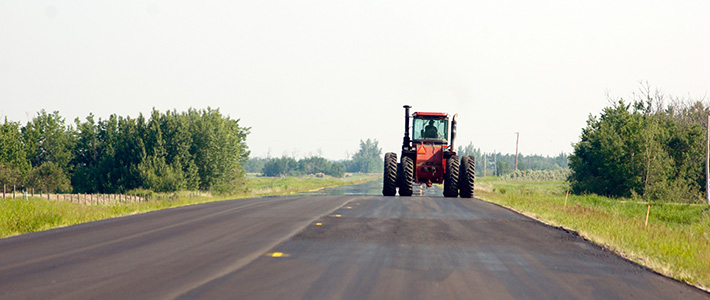Your roof’s shingles may only have just begun to live.
Homeowners are used to getting roughly 20 years out of their shingles and then facing the expensive reality of replacing them all.
But with soy-based product RoofRestor, reality is changing and helping save homeowners money.
“My husband, Brad, and I are really excited about utilizing this product on our home because it’s an investment, but it’s a lot less investment,” Minnesota Soybean Research & Promotion Council (MSR&PC) director Rochelle Krusemark said. “What I’d like to share is that the cost of this rejuvenation for this square footage is about a fifth to a sixth of what it would have cost to put new shingles on this roof.”
MSR&PC and the Agricultural Utilization Research Institute (AURI) visited Krusemark’s family lake house on Fox Lake in Martin County to demonstrate RoofRestor. The roof on the house is 20 years old, but after this application, it should last another 5-10 years.
“The reason why Brad and I wanted to use this product is first of all, we’re farmers and we grow soybeans and secondly, I voted to invest soybean checkoff funds for these products,” Krusemark said. “I wouldn’t be very credible if I wasn’t willing to use it on my own shingles.”
RoofRestor, a roof sealant, was developed from a product that’s an asphalt rejuvenator. This soy-based rejuvenator is emulsified and sprayed onto the roof to soak in over 48 hours.
This project started with funding from soybean checkoff programs round the nation.
“I think one of the unique things about this product is that if we can get adoption, we use more soybeans from Minnesota farmers,” said Harold Stanislawski, director of business and industry development for AURI. “We did some early calculations that up to 3 million bushels of soybeans could be used in rejuvenation just in the United States alone. That’s significant. That’s what I think farmers are looking for when they invest their checkoff dollars into new uses.”
Completing the project on the 5,200 square-foot roof at the Krusemark’s house took 10.4 bushels of soybeans.
“There’s a few things that we know about asphalt shingles. First of all, the amount of asphalt oil content they are manufacturing into new shingles has been declining over the years, so asphalt shingles haven’t been lasting as long as they’re advertised,” said Brian Ahladas, president of RoofRestor. “There’s pent-up demand for a solution to that problem for consumers to avoid replacing the roof as early as they otherwise would.”
Ahladas added that, as the shingles age, the asphalt oil content oxidizes, and the shingles become dry and brittle, and start to lose the granule coating because the adhesives break down. As RoofRestor oils soak into the shingle, it replaces the asphalt oil and those oils will bond with the shingle material and restore the adhesion, the waterproofing and the flexibility, extending the shingles’ life.
“If we can rejuvenate this roof and make it more pliable and last a little longer, we can keep these asphalt shingles out of the landfill,” Krusemark said. “That is exciting to me because the research shows that there are 11 million tons of asphalt shingles that go into landfills every year and only about 20% of the shingles that are taken off roofs are ever recycled.”
According to a recent study by The Ohio State University, approximately seven percent of U.S. roof shingles are replaced each year. The study found that 5.6 billion pounds of landfill waste could be avoided each year.






